The east end of the Proctor campus has been a-buzz with activity since the start of the school year. Cruising into Slocumb Hall, as many folks around campus often will on any given day, you see the usual order and light. The first thing you notice is how peaceful and still the room feels, even as students file into the space.
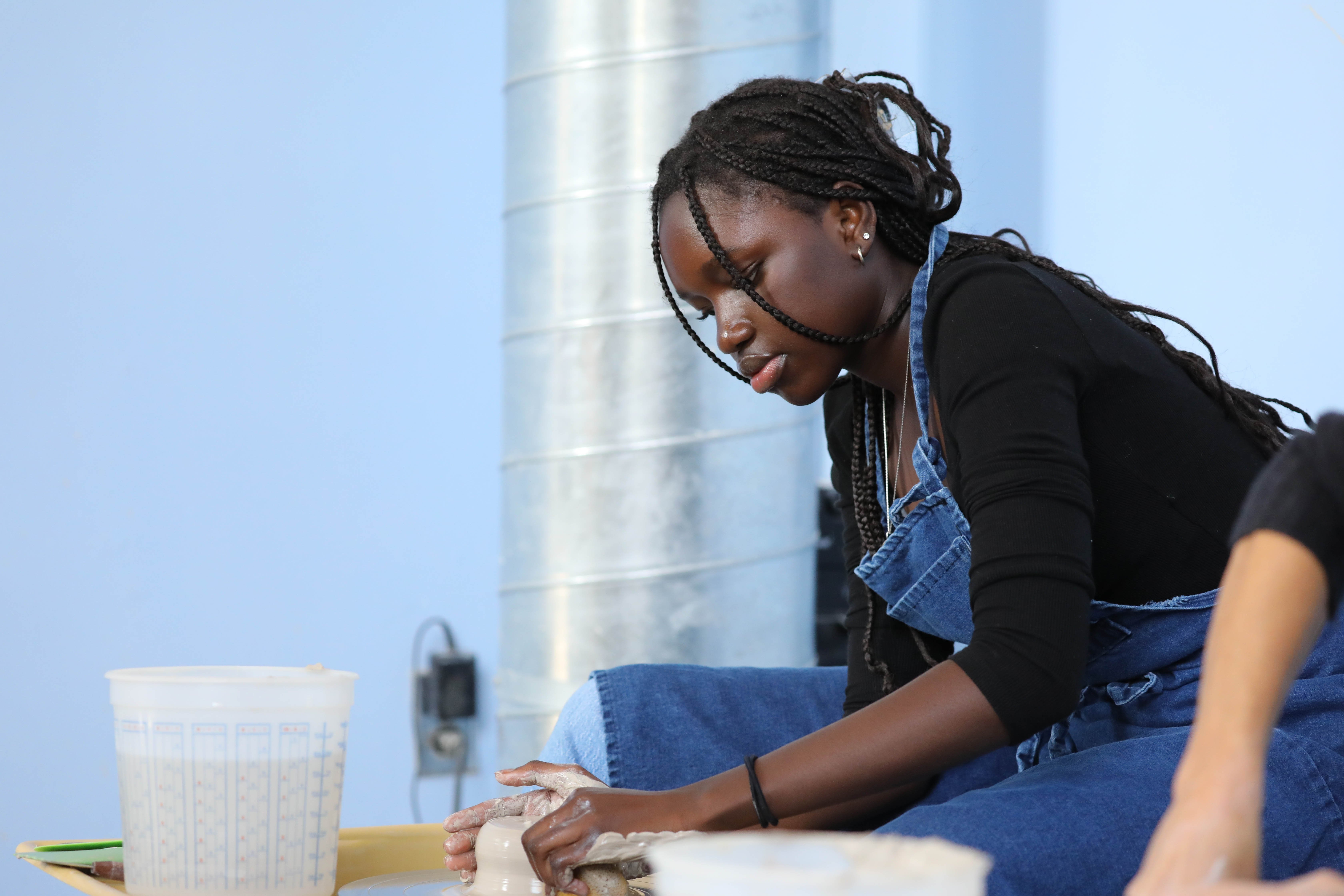
Everything is in its place even though the space itself is well-worn and well-cared for in our current school context. Tucked away in corners you see art emerging in creation, as major projects begin to bloom in the Hall’s main room. Slocumb Hall had many uses during its long life, including a stable and the school’s gymnasium. Your eyes can’t help but gaze up to the ceiling where splat marks dart the wooden rafters – pieces of clay – signaling both rites of passages and creativity at play as students still throw clay pieces to mark some milestone or just because.
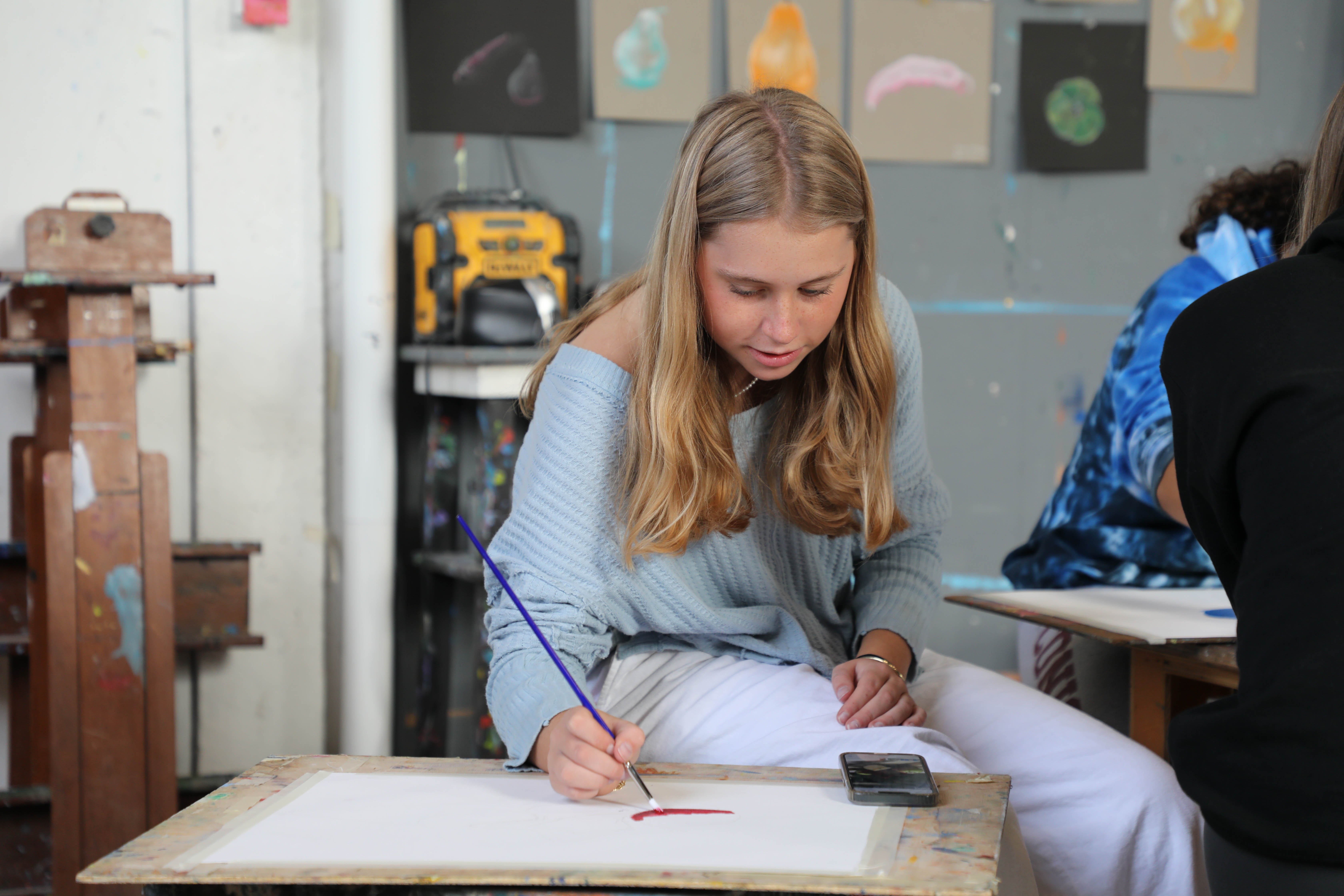
On my first visit to Slocumb, I was also encouraged to “throw some clay,” which I did as it came up and eventually came down out of the rafters. I wonder how many other schools can boast this kind of counter-culture action as a normal way of “doing school.” It’s as if the room itself is daring its inhabitants to ‘drop all pretenses and get down to work/play.’ The space itself demands that a person cut loose and stop the posing. Often the quiet thrum of teachers and students thinking through and collaborating on projects, pieces, demonstrations, and joyful banter permeate the place. Mentioned by many students on last year’s survey of “the place where I feel the happiest on campus,” Slocumb certainly engages the senses and ignites the soul of all those who choose to partake.
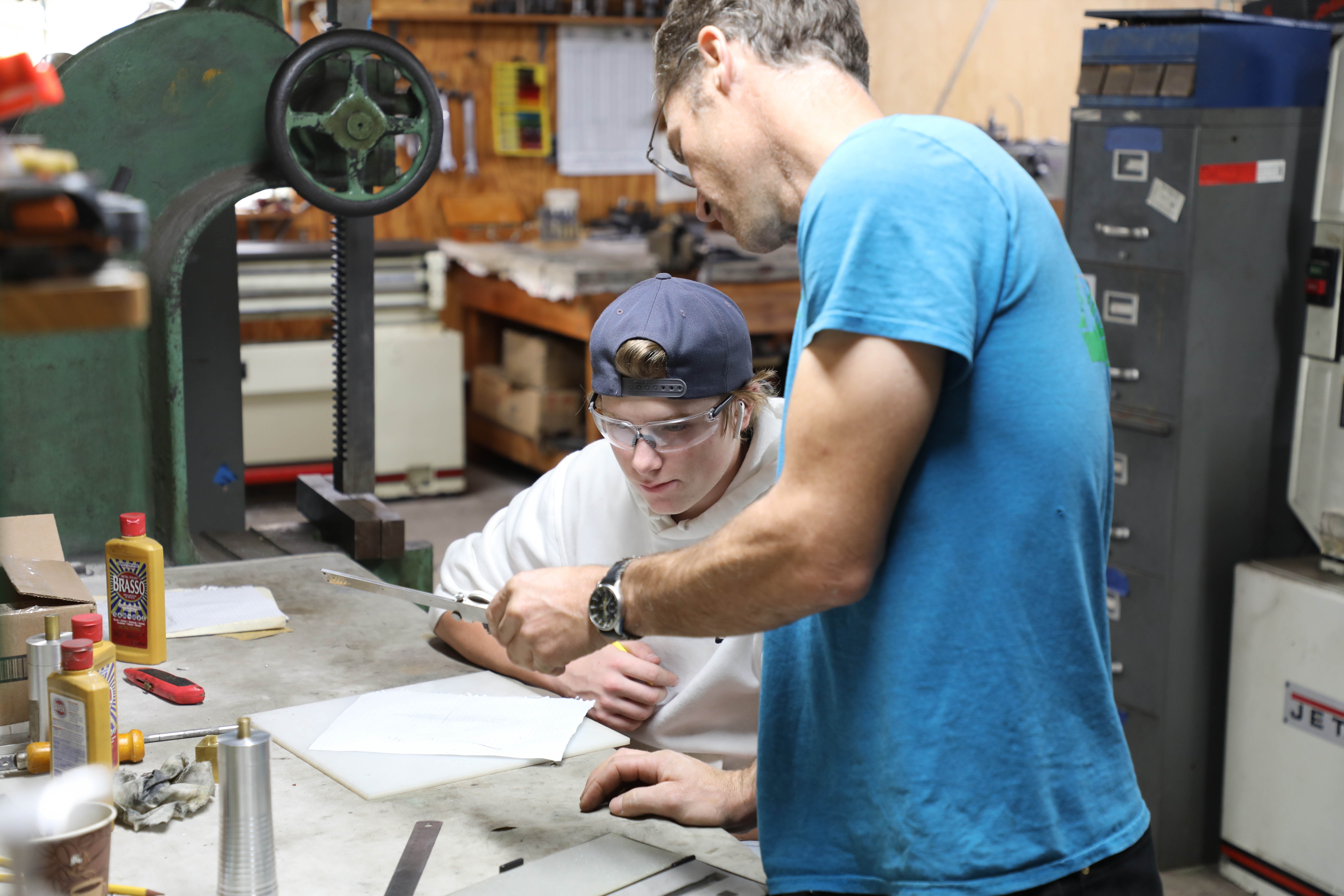
The art spaces in and around the campus are all, in their way, like Slocumb Hall. Giving voice to the mouthless and wordless buildings is about the summoning of the “P” in “Powerful” spaces. Slocumb Hall and the teachers and students who “live there”' provide a sense of the vitality of Proctor’s art studio as a well lived in and even better used and loved haunt of our students and faculty. During school hours, each area is filled with light and energy. Making way to the drying rack in the back, you see the past pottery projects ready to be glazed. While in the ante-room before thronging into the main room, all sorts of corks and yarn and pieces of material that is used to make found art live there. Students and teachers alike understand that in order to play, you have to use things that demand to be used in a variety of ways, whether the object is hot glued or traced or manipulated in some way to achieve an effect. Making an impact is what art can be about. Essentially the art barn that is Slocumb Hall serves as a kind of hub to the sense and sensibilities of hundreds, if not thousands of Proctor people who have gone through the program and have found their purchase among the paints, clay, and other materials to make something.
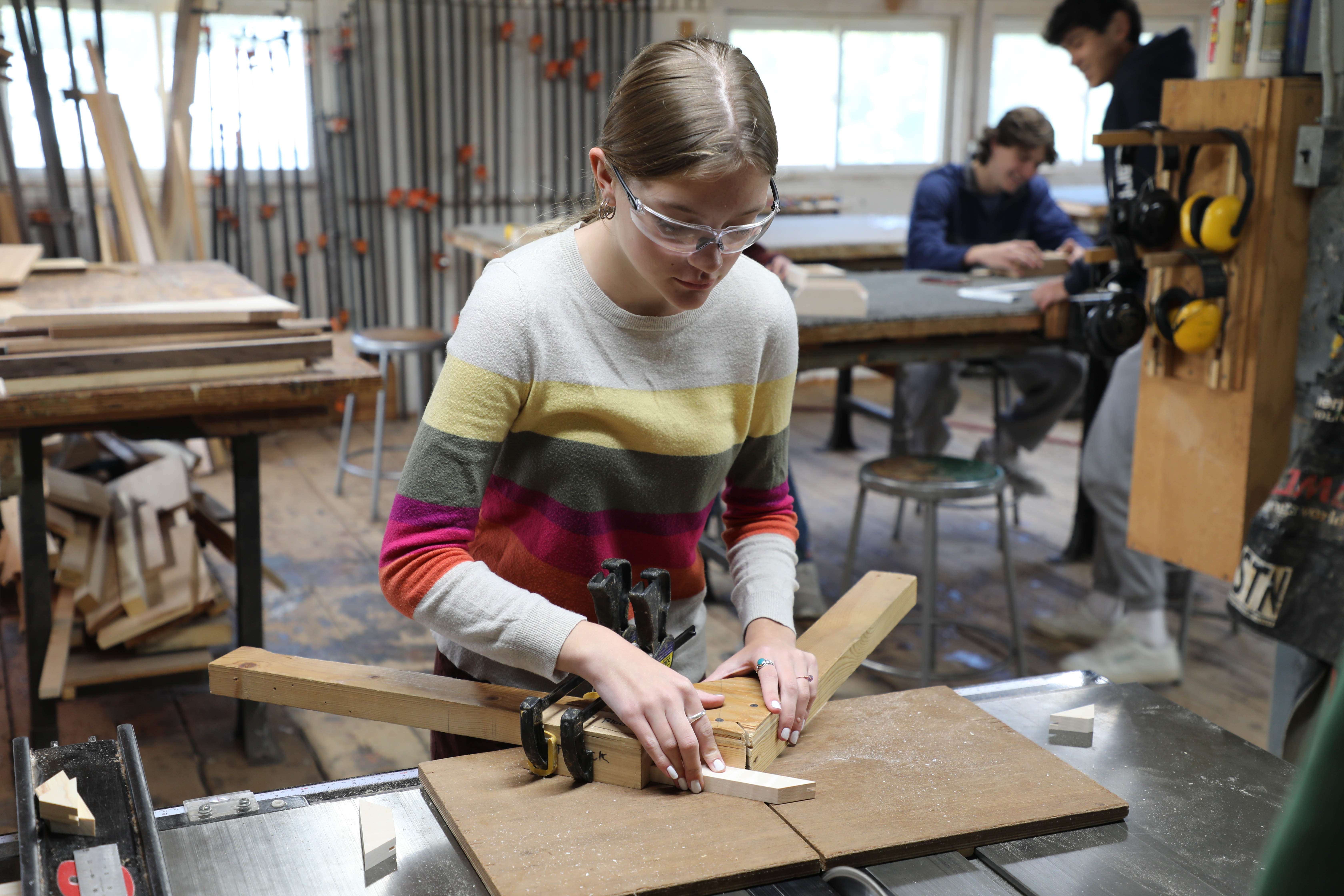
Not more than forty yards away, just north of the much loved industrial arts complex – metal works, forge, wood shop, welding studio – are the Wilkins Meeting House and the Music Buildings. Both are getting a workout just, like Slocumb does, as have the visual and industrial arts building have gotten over the years. In our time as a school, Proctor has seen transformative productions in the Meeting House, the Wise Center, and even in the Stone Chapel way back in the day. Likewise, the Music Studio courses and teams with students coming in and out every single day, making it also one of the favorite places of many. Students have slayed monsters and tamed ogres in the Norris Family Theater, and have rehearsed for Jazz/Rock Ensembles and recorded original music in the Music Studio. What is exciting for many of our current students and faculty can be seen in the collaboration of newer faculty with those familiar faces that our students have come to know and trust. Just like the excellence pursued on the visual and industrial arts side, our performing arts productions and performances this year will continue to upfront Proctor-specific high standards in the theater and the music arena.
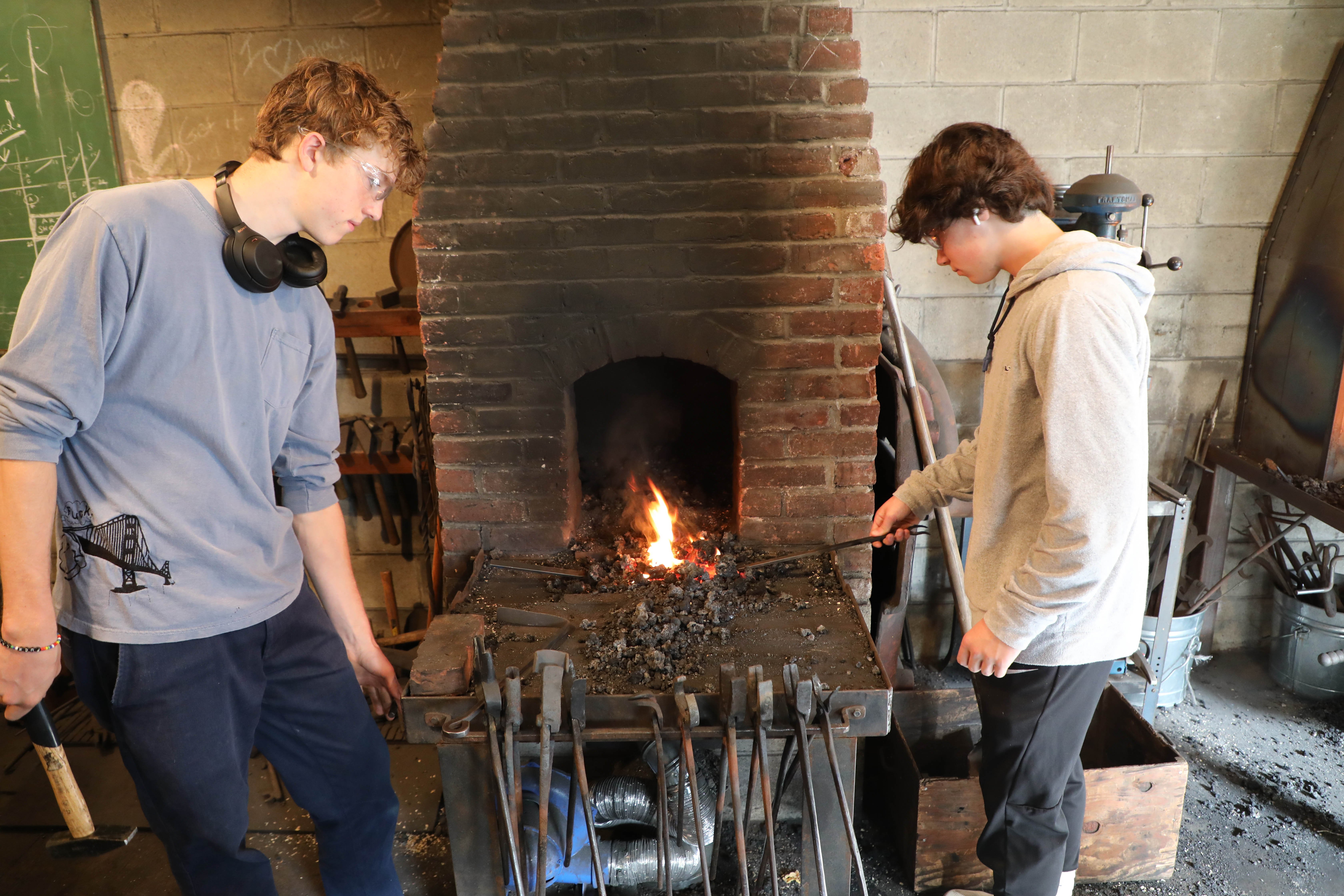
When you look closely these days after school you will see a fall play being rehearsed in the Wilkins Meeting House as well as students grappling with some harmony or melody downstairs in the Music Studios whisper rooms.
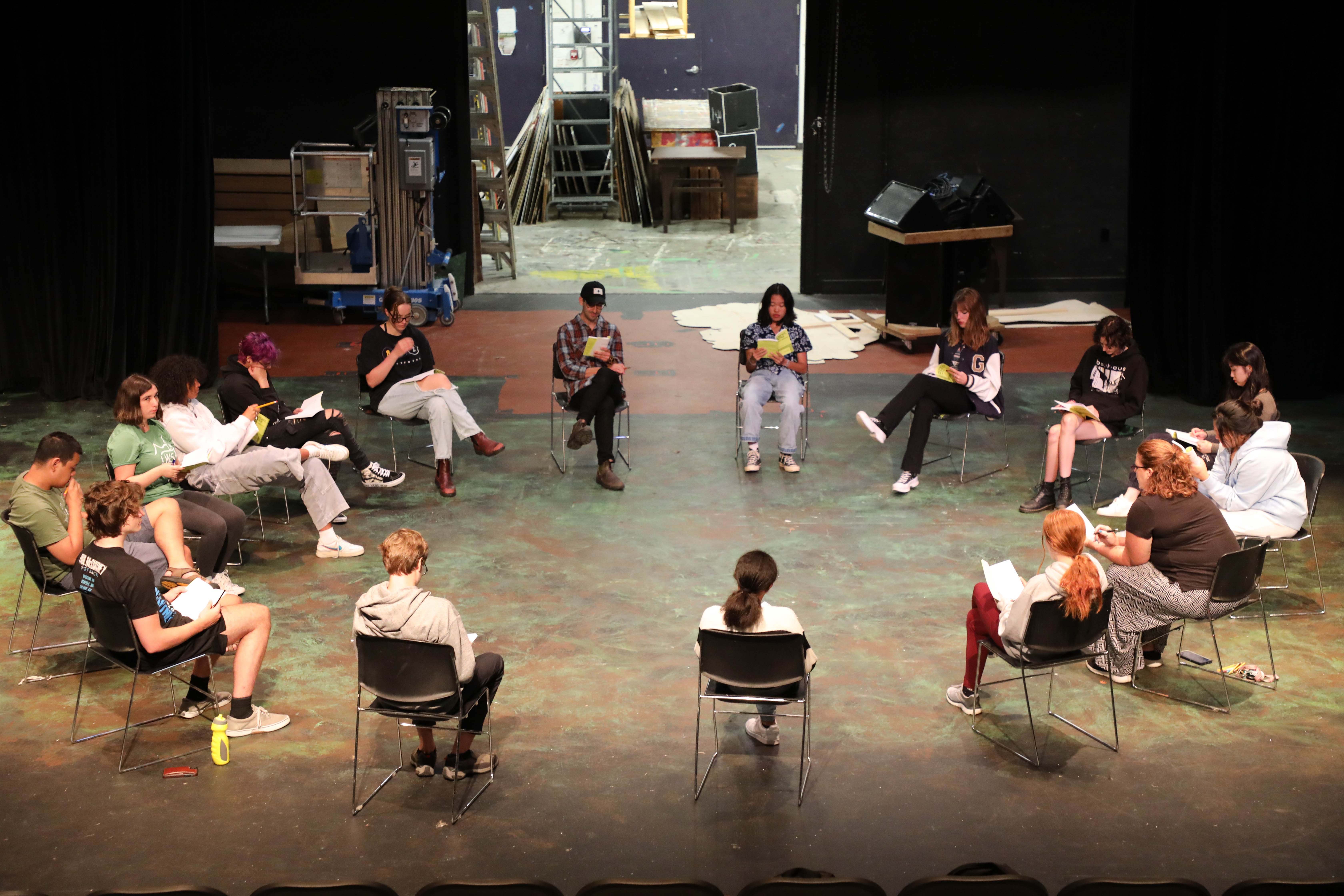
As wonderful as these places are, they could not exist without the tireless efforts of our Visual and Performing Arts faculty. Although the department has been separated in two (NOTE: We had one department up until the current school year), the objective remains the same: To explore the nature and boundaries of creativity in whatever art or medium a student chooses. The people who teach at Proctor are our strength; many of whom are working and practicing artists, performers, and musicians themselves.
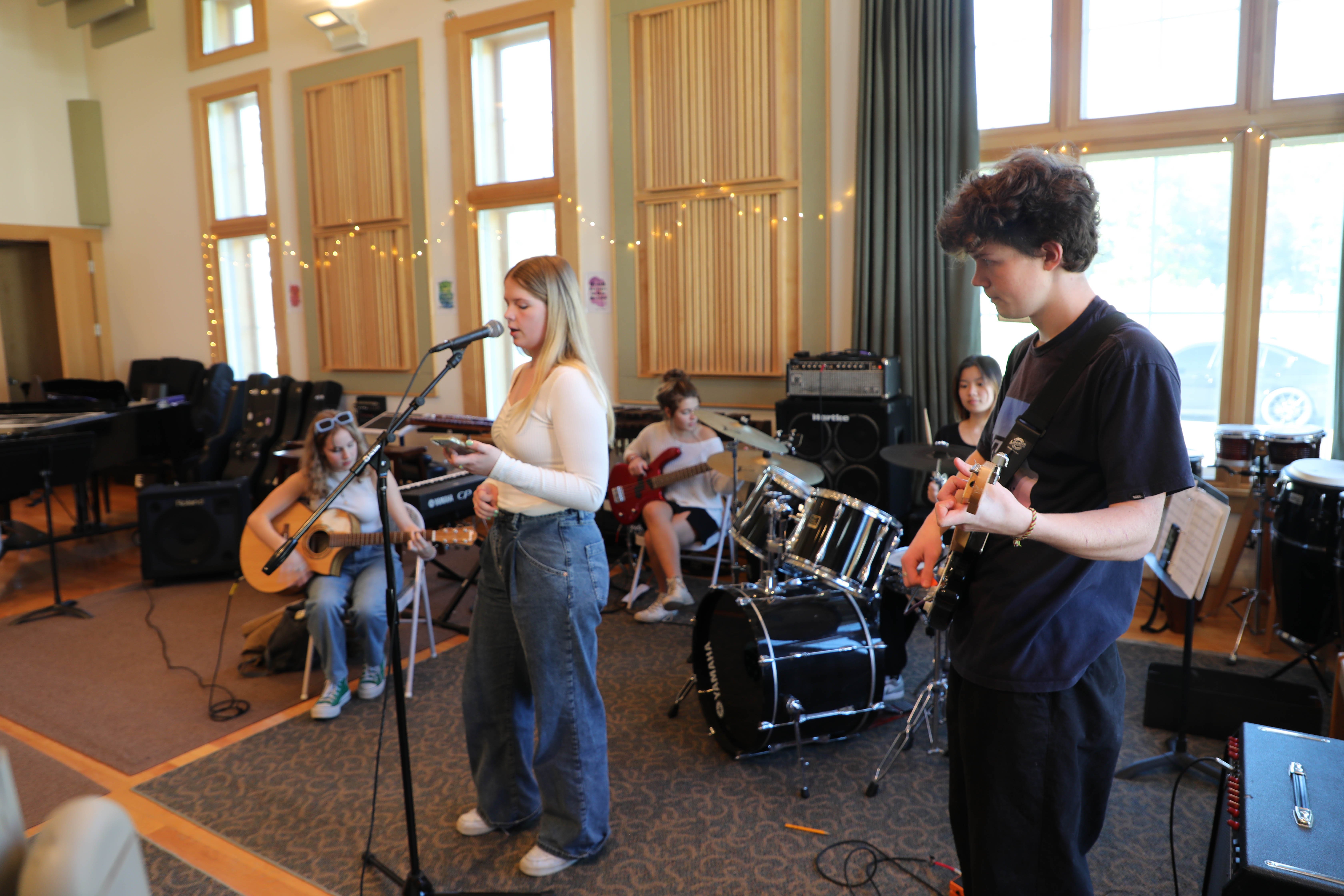
We cannot wait until our community of seasoned applauders and supporters of the arts get to dive into this new season already underway with students and adults of Proctor leading the way. Prepare to be transformed once again.

Brian W. Thomas, Proctor Academy Head of School
Curated Reading:
Today’s piece had me thinking about Proctor’s neighbors who have gone on to their final resting place at the Proctor Cemetery, Jane Kenyon and Donald Hall. As some of you may know, the famous poet and writer power couple lived around the corner from Proctor at Eagle Pond. A number of folks are working to bring attention to their work, art, and lives as poets and people who lived full and passionate lives in Northern New England where we Proctor folk make our home. Hall’s wonderful poetic prose piece to Kenyon stands the test of time. Read “The Third Thing”: HERE.
Also, come celebrate Donald Hall and Jane Kenyon’s work at Proctor in two weeks. Stay tuned for more details on our portal of events.







